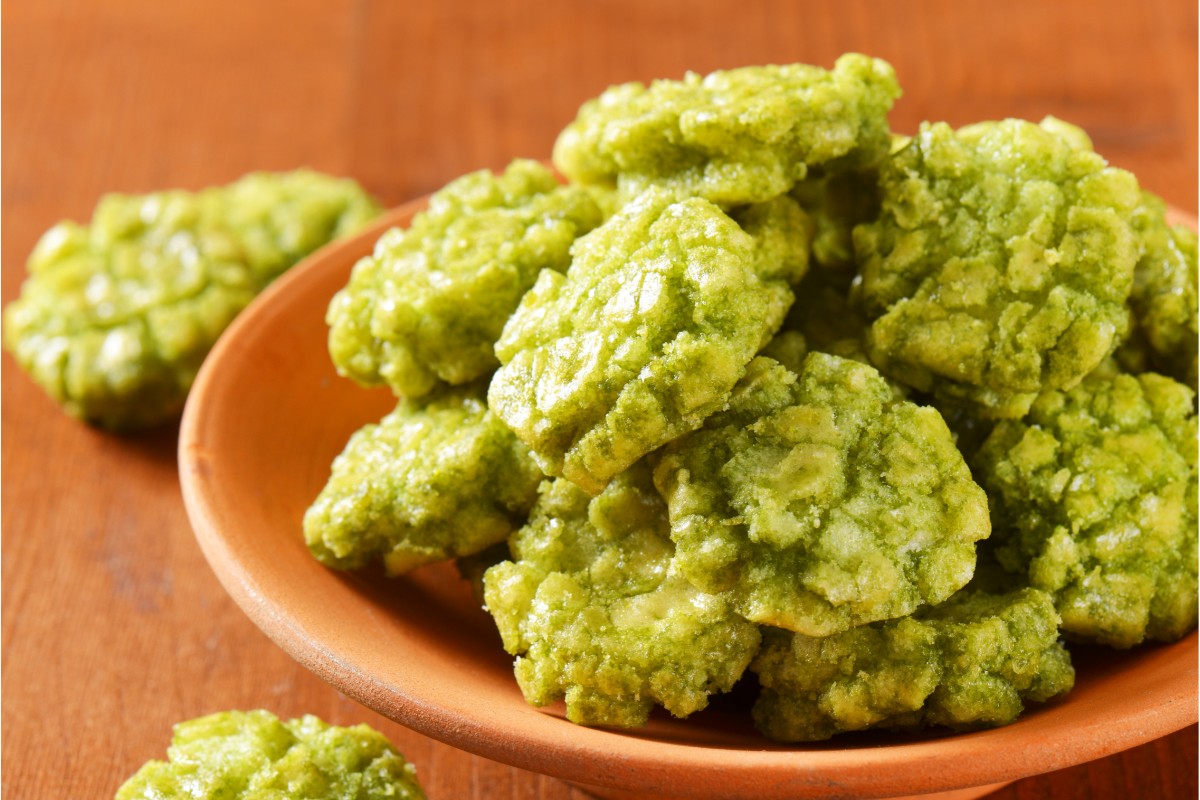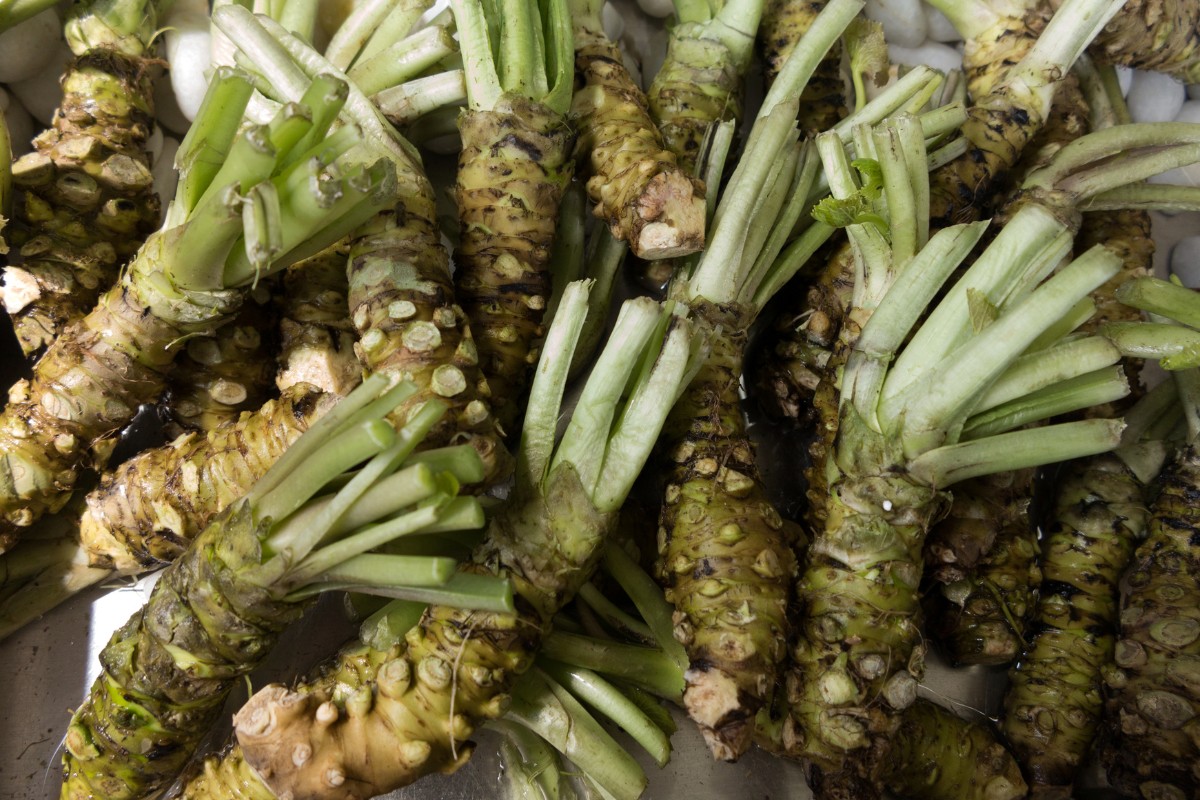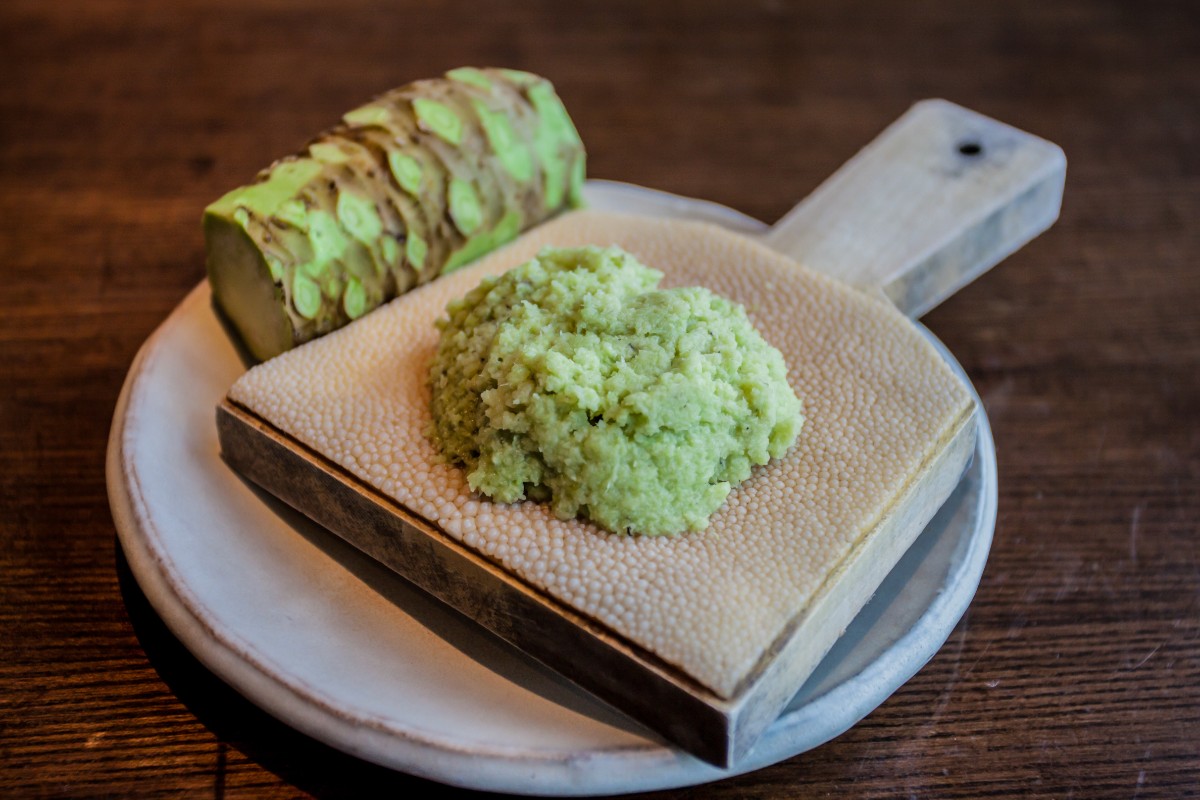If you like spicy food, you might be wondering if wasabi is very spicy for most people. This is a common question as people have often heard about wasabi and how spicy it is but aren’t sure if it lives up to the hype.
Wasabi belongs to the mustard family and grows in thick, greenish roots, similar to ginger. The wasabi is often ground into a paste that is used as a typical condiment for a variety of oriental and fish dishes.
It’s known for its strong and fresh flavor that can be slightly overwhelming depending on how much you use. It’s less common in the United States but is gaining popularity as people try it in restaurants.
Read on to find out if wasabi is spicy or not, what this type of spice tastes like, and what to eat it with.
Wasabi is very spicy
If you want to try wasabi, you might be wondering if it’s spicy. The majority of people would describe wasabi as extremely spicy and difficult to eat for those who are sensitive to spicy foods.

Wasabi is the type of condiment that usually hits your nose before it gets into your mouth. Because of this, many people find eating something with wasabi irritating to their noses because the heat affects them differently.
Because of this, you may be more sensitive to the spiciness of wasabi than other types of spicy foods. As it doesn’t directly affect your mouth like many spicy foods do.
Because of this, wasabi is often used in very small amounts to add flavor and spiciness. It is not usually added in large amounts as it would be extremely overwhelming and uncomfortable for the person eating it.
Wasabi is traditionally eaten with sushi as a side dish. The spiciness complements the fresh fish flavors, and even the smallest amount of wasabi is enough to add real flavor to your sushi.
There are real and fake types of wasabi
When we talk about wasabi, it is important to mention that there are real and fake types of wasabi paste. In fact, you’re more likely to come across fake wasabi than real wasabi.
Fake wasabi is much more popular and is commonly sold in grocery stores and served in restaurants. You can usually only find real wasabi in high-end restaurants, as they grate the wasabi right in front of you when you’re about to eat.
This is because real wasabi is much lighter in taste, and after grating, the taste quickly begins to deteriorate. For this reason, a chef will usually grate fresh wasabi at your table for you to enjoy in all its glory.
So real wasabi usually has a lighter flavor and isn’t nearly as spicy as you might think. It’s fake wasabi, often made from horseradish, and has a much stronger and spicier flavor.
Fake wasabi will also have a much smoother consistency if it’s a thick paste. As the horseradish has been crushed to resemble a wasabi paste.
Real wasabi paste turns out to be much coarser and grittier because it’s grated rather than mixed. These are some ways you can tell the two apart, as well as the strength of the flavor and how hot they are.
Because fake wasabi will be much stronger and have stronger spicy taste more intense than fresh wasabi.
Is wasabi bitter?
One aspect of wasabi is that it has a fairly strong, bitter note. This isn’t as noticeable with wasabi paste, as the rubbing helps bring out the spiciness that overwhelms the bitterness.

But if you bit into a wasabi root, you would find that it was mostly better and not as spicy. Only a small amount of bitterness remains in the wasabi after it has been ground into a coarse paste that can be used as a condiment.
As with many types of roots, rubbing and exposing the pulp to air helps bring out other flavors and spices. Enhances flavor and helps mask some of the bitter notes that may not be nearly as pleasant.
How does wasabi taste?
If you’ve never tried wasabi, you might be wondering what this spice tastes like and what to expect. This is another frequently asked question as many people do not know what to expect when it comes to wasabi.
This is a rather mysterious type of spice that many people have never tasted before. Especially since it’s only served with certain foods and most people don’t buy it in stores.
If you are interested in trying wasabi, you should know what to expect and what kind of flavors you are most likely to experience. Especially if you want to try fresh wasabi but don’t know how to tell the difference between fresh and fake wasabi paste.
Hot mustard
Many people describe wasabi as having a pungent mustard flavor. Something that is very understandable considering that wasabi belongs to the mustard family.
The taste will be sharp and slightly better, with strong spicy notes hitting your throat and nose. It’s the type of spice that usually hits you after you’ve swallowed your food and has a lasting spicy effect.
Some people notice the mustard notes in wasabi more than others, depending on your taste buds. Although it will be a very unique hot mustard flavor that is not like the regular mustard condiments you have tried.
horseradish
Another thing people compare wasabi to is horseradish as these two products have a similar taste. Because of this, many people use horseradish instead of wasabi to make fake wasabi paste.
Horseradish and Wasabi are both very strong and pungent flavors with intense heat. The real wasabi paste should also have a distinct freshness in flavor as it should have been freshly grated before serving.
If it doesn’t taste fresh, it’s most likely fake wasabi, made primarily from mixed horseradish and not wasabi root.
Wasabi is a healthy option
Many people might be shocked when they realize that wasabi isn’t just a delicious condiment option. It’s also quite healthy compared to a variety of other types of spices you may have used before.

Fresh wasabi is packed with vitamins and minerals and provides nutritional properties when consumed. Something you won’t find in most US spices as they are highly processed and lack nutritional quality.
Some of the vitamins and minerals found in higher amounts and wasabi are vitamin C, magnesium, zinc and a variety of other vitamins and minerals. This makes this a spice that has great nutritional properties.
However, it’s important to note that since you’re not going to be consuming wasabi in large quantities, you probably won’t get many of these benefits. But wasabi is generally healthy because it doesn’t contain any additional ingredients when it’s real wasabi.
Unlike other spices that contain preservatives, colorings, sweeteners and many other additives that are not healthy for you. Therefore, any type of spice that contains few ingredients is considered a healthier option.
Wasabi can be eaten raw
You may be wondering if you can consume wasabi raw without experiencing any side effects. The reality is that wasabi is always served raw as that is the best condition to serve it for the best flavor.
You will never see wasabi served cooked as this removes all of the delicious flavors you are looking for. It is always served raw to preserve flavor and enhance spiciness.
Wasabi is usually served finely grated to produce a coarse paste that can be added to a variety of dishes as a light condiment. Just a tiny amount of this paste is enough to add a touch of flavor and a hint of spiciness to your food.
You can also see thinly sliced pickled wasabi, which can also be used as a hot and sour spice. This goes great with all types of sushi and various other dishes that could use an explosion of flavor and spice.
Final Thoughts
If you’ve never tried wasabi, you might not know just how hot this spice really is. This is because wasabi is known to have a very strong pungency that hits you in the throat and nose when you eat it.
While it’s important to remember that there is real and fake wasabi, real wasabi is much lighter in flavor and not as overwhelming.
